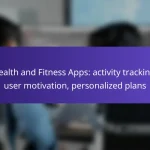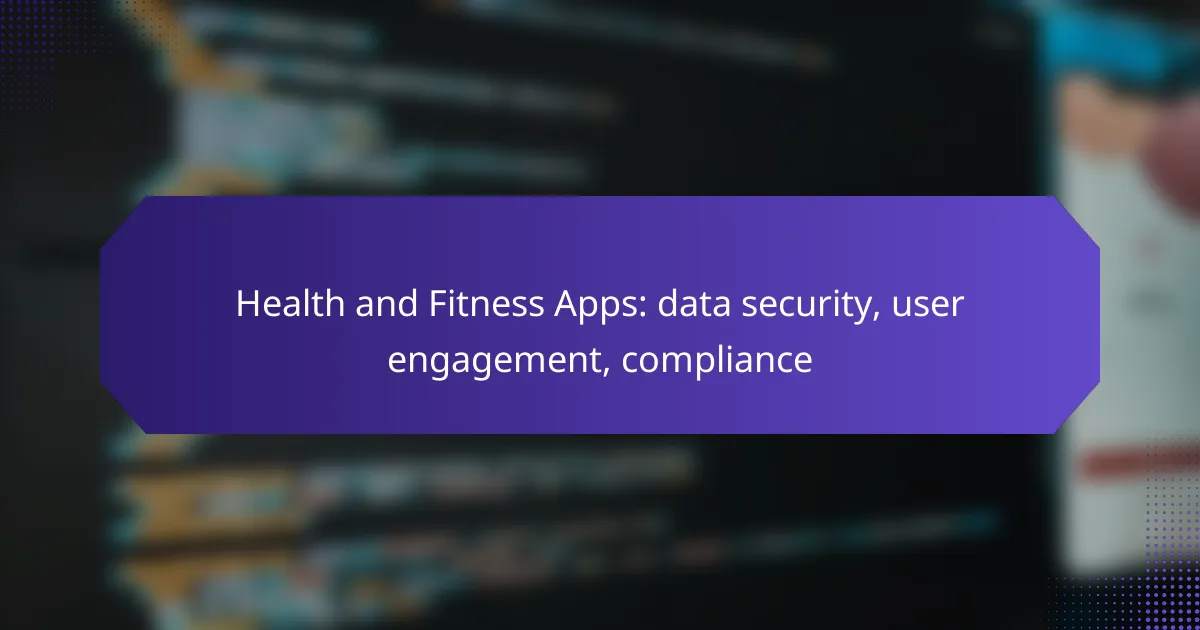Health and fitness apps are increasingly focused on data security, ensuring user privacy through compliance with regulations like GDPR. By employing robust encryption and transparent data policies, these apps protect personal health information while enhancing user engagement through interactive features and personalized experiences. This combination fosters a secure and motivating environment for users to achieve their fitness goals.

What are the best health and fitness apps for data security in the UK?
The best health and fitness apps for data security in the UK prioritize user privacy and comply with regulations like GDPR. These apps implement strong encryption, transparent data policies, and user controls to safeguard personal health information.
MyFitnessPal
MyFitnessPal is known for its robust data security measures, including encryption for user data and compliance with GDPR. Users can control their privacy settings, deciding what information to share and with whom.
To enhance security, regularly update your password and enable two-factor authentication if available. Be cautious about sharing personal health data on social media through the app.
Fitbit App
The Fitbit App offers strong data protection features, including secure data storage and user consent for data sharing. It adheres to GDPR standards, ensuring that users’ health data is handled responsibly.
Users should regularly review their privacy settings and be mindful of the data shared with third-party apps. Keeping the app updated also helps maintain security against vulnerabilities.
Strava
Strava has implemented various security features, such as data encryption and customizable privacy settings. The app allows users to control who can see their activities, which is crucial for maintaining privacy.
To protect your data, avoid sharing sensitive information in your profile and regularly check your privacy settings. Strava also offers a feature to hide your home location on maps, which enhances security.
Apple Health
Apple Health prioritizes user data security with end-to-end encryption and strict privacy policies. The app allows users to manage their health data and decide what to share with other apps and services.
To maximize security, use a strong passcode on your device and enable biometric authentication. Regularly review app permissions to ensure that only necessary data is shared.
Google Fit
Google Fit employs robust security measures, including data encryption and compliance with GDPR. Users can manage their data sharing preferences, allowing for a personalized approach to privacy.
To enhance your data security, regularly update your Google account password and review the apps connected to Google Fit. Be cautious about granting permissions to third-party apps that access your health data.
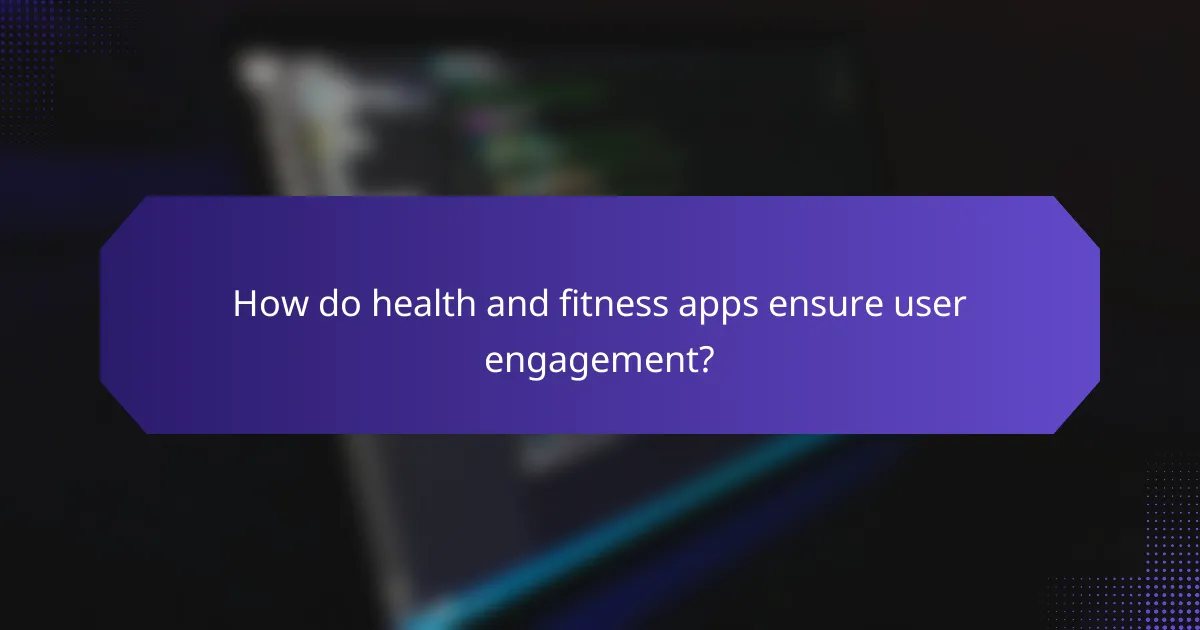
How do health and fitness apps ensure user engagement?
Health and fitness apps enhance user engagement through interactive features that motivate users to stay active and committed to their fitness goals. By incorporating elements like gamification, personalized plans, community support, and progress tracking, these apps create a compelling user experience that encourages regular use.
Gamification features
Gamification features in health and fitness apps include rewards, challenges, and leaderboards that make workouts more enjoyable. Users can earn points or badges for completing tasks, which fosters a sense of achievement and competition. For example, an app might offer weekly challenges where users can compete against friends or the community, boosting motivation.
These features can significantly enhance user retention, as they create a fun and engaging environment. However, it’s essential to ensure that the gamification elements do not overshadow the primary fitness goals, as this can lead to distraction rather than motivation.
Personalized workout plans
Personalized workout plans tailor fitness routines to individual user preferences, goals, and fitness levels. By assessing user data, such as age, weight, and fitness history, apps can create customized plans that adapt over time. This personalization helps users feel more connected to their fitness journey and increases the likelihood of sticking to their routines.
When choosing an app, look for those that offer flexibility in adjusting plans based on progress or feedback. This adaptability is crucial for maintaining long-term engagement and ensuring users feel their needs are being met.
Community support
Community support features allow users to connect with others who share similar fitness goals, fostering a sense of belonging. Many apps include forums, social sharing options, or group challenges that encourage users to interact and motivate each other. This social aspect can significantly enhance user engagement, as individuals often feel more accountable when part of a community.
However, it’s important for users to find a community that aligns with their values and goals. Engaging with a supportive and positive group can lead to better outcomes and a more enjoyable experience.
Progress tracking
Progress tracking is a vital feature that enables users to monitor their fitness journey over time. Most health and fitness apps provide tools to log workouts, track weight changes, and measure improvements in performance. This visibility helps users stay motivated as they can see tangible results from their efforts.
To maximize the benefits of progress tracking, users should regularly review their data and set achievable milestones. This practice not only reinforces commitment but also allows for adjustments to workout plans as needed, ensuring continued engagement and progress.

What compliance standards do health and fitness apps need to meet in the UK?
Health and fitness apps in the UK must comply with several key standards to ensure user data security and privacy. These include the General Data Protection Regulation (GDPR) and various data protection regulations that govern how personal health information is handled.
GDPR compliance
The General Data Protection Regulation (GDPR) is a crucial standard for health and fitness apps operating in the UK. It mandates that apps obtain explicit consent from users before collecting or processing their personal data, including health information.
Apps must also provide users with clear information about how their data will be used, stored, and shared. Failure to comply can result in significant fines, which can reach up to 4% of annual global turnover or €20 million, whichever is higher.
Data protection regulations
In addition to GDPR, health and fitness apps must adhere to the UK Data Protection Act, which complements GDPR by outlining specific provisions for data handling. This includes ensuring that personal data is processed lawfully, fairly, and transparently.
Apps should implement robust security measures to protect user data from breaches. Regular audits and risk assessments can help identify vulnerabilities and ensure compliance with these regulations.
Health Insurance Portability and Accountability Act (HIPAA)
While HIPAA primarily applies to the United States, health and fitness apps that operate internationally or handle data from US users must consider its requirements. HIPAA sets standards for the protection of health information and requires that apps implement safeguards to ensure confidentiality and security.
For UK-based apps that may interact with US users, understanding HIPAA compliance can be essential. This includes ensuring that any data sharing with third parties is done with user consent and that proper security measures are in place to protect sensitive health information.
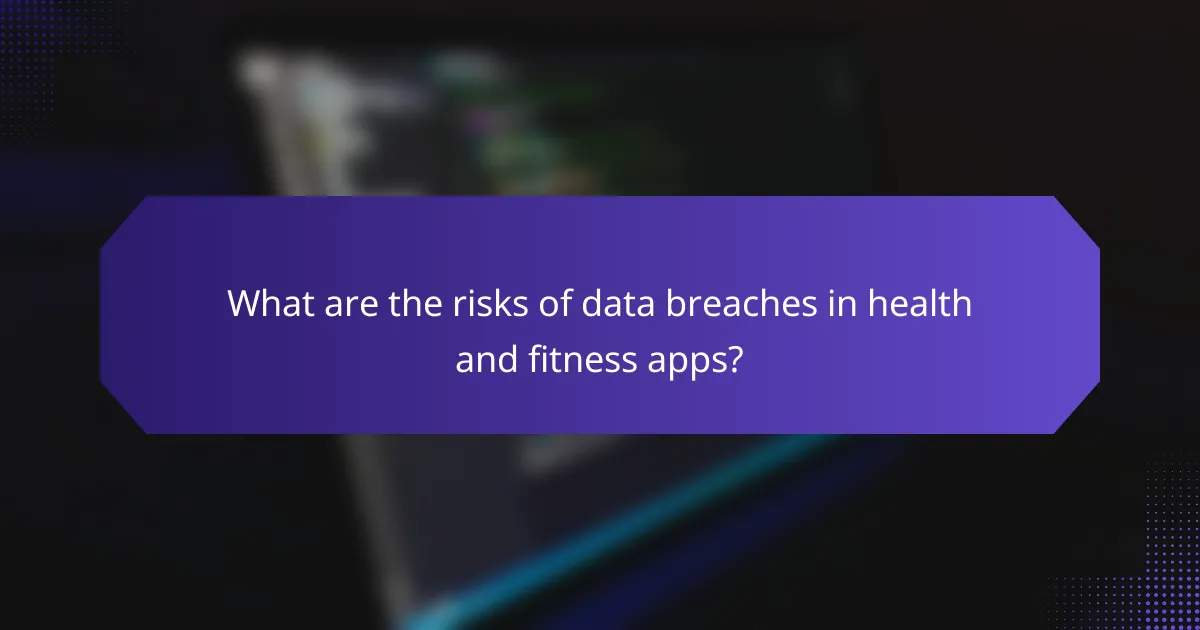
What are the risks of data breaches in health and fitness apps?
Data breaches in health and fitness apps can expose sensitive personal information, leading to various risks for users. These breaches can result in unauthorized access, identity theft, and a significant loss of user trust, which can ultimately affect the app’s reputation and user base.
Unauthorized access to personal data
Unauthorized access occurs when individuals gain entry to personal information without consent. This can happen through hacking, weak passwords, or inadequate security measures. Users should ensure that apps utilize strong encryption and two-factor authentication to protect their data.
Regularly updating passwords and monitoring account activity can help users identify any suspicious access early. It’s also advisable to read privacy policies to understand how personal data is stored and protected by the app developers.
Identity theft
Identity theft is a serious consequence of data breaches, where stolen personal information is used to impersonate someone else. This can lead to financial loss, damaged credit scores, and legal issues for the victim. Health and fitness apps that collect sensitive data, such as payment information or health records, are particularly vulnerable.
To mitigate this risk, users should be cautious about sharing personal information and only use apps that comply with data protection regulations. Regularly reviewing financial statements and credit reports can help detect any fraudulent activity early.
Loss of user trust
A data breach can severely damage user trust, as customers may feel their privacy is compromised. Once trust is lost, it can be challenging for an app to regain its user base. Developers must prioritize data security and communicate transparently with users about their data protection measures.
To rebuild trust, apps should implement robust security protocols and inform users promptly in case of a breach. Offering support and resources for affected users can also help mitigate the negative impact on user confidence.
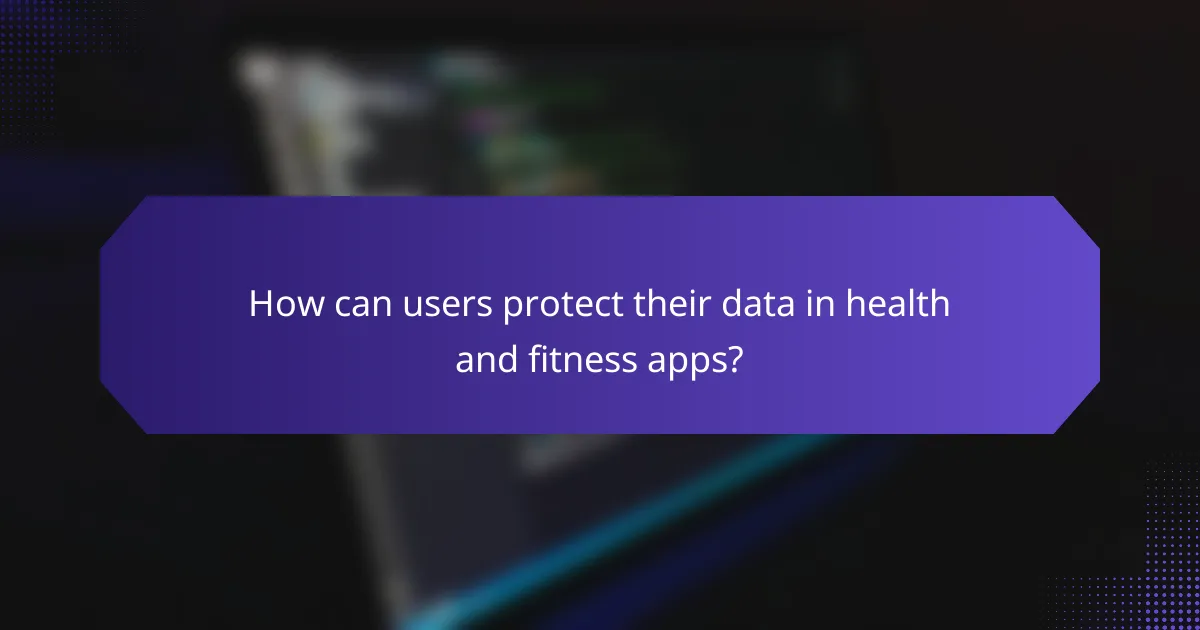
How can users protect their data in health and fitness apps?
Users can protect their data in health and fitness apps by implementing strong security measures, such as using robust passwords, enabling two-factor authentication, and regularly updating app permissions. These steps help safeguard personal information from unauthorized access and potential breaches.
Using strong passwords
Creating strong passwords is a fundamental step in protecting data in health and fitness apps. A strong password typically includes a mix of uppercase and lowercase letters, numbers, and special characters, and should be at least 12 characters long. Avoid using easily guessed information, such as birthdays or common words.
Consider using a password manager to generate and store complex passwords securely. This tool can help you maintain unique passwords for different apps, minimizing the risk of a single breach compromising multiple accounts.
Enabling two-factor authentication
Two-factor authentication (2FA) adds an extra layer of security by requiring not only a password but also a second form of verification, such as a text message code or an authentication app. Enabling 2FA significantly reduces the likelihood of unauthorized access, even if your password is compromised.
Many health and fitness apps offer 2FA as an option in their security settings. Take the time to enable this feature, as it can be a simple yet effective way to enhance your account’s security.
Regularly updating app permissions
Regularly reviewing and updating app permissions is crucial for maintaining data privacy. Health and fitness apps often request access to sensitive information, such as location and health data. Periodically check the permissions granted to each app and revoke any that are unnecessary or overly intrusive.
On most devices, you can manage app permissions through the settings menu. Make it a habit to reassess these permissions, especially after updates or if you stop using certain apps, to ensure that your personal data remains protected.



